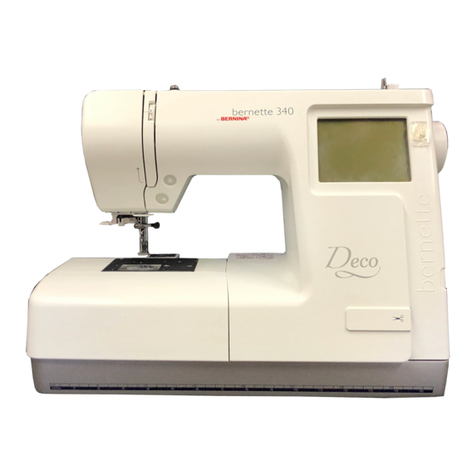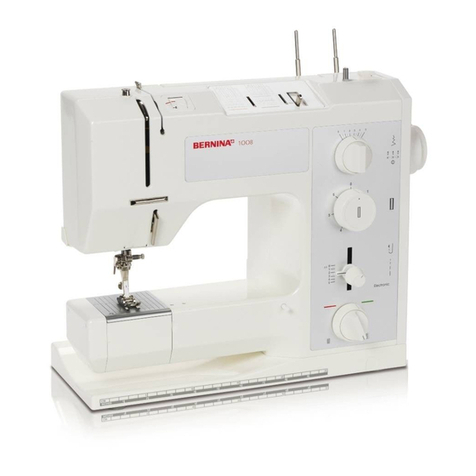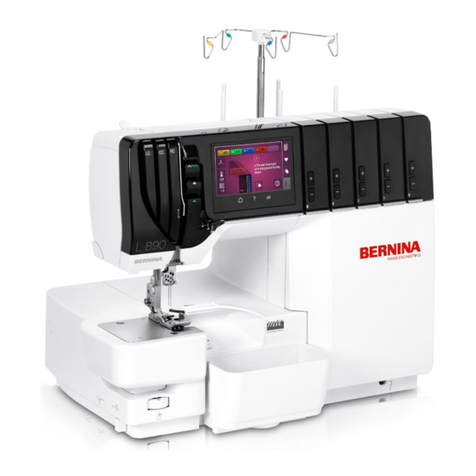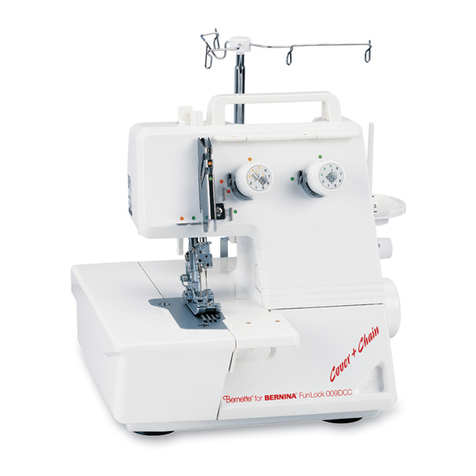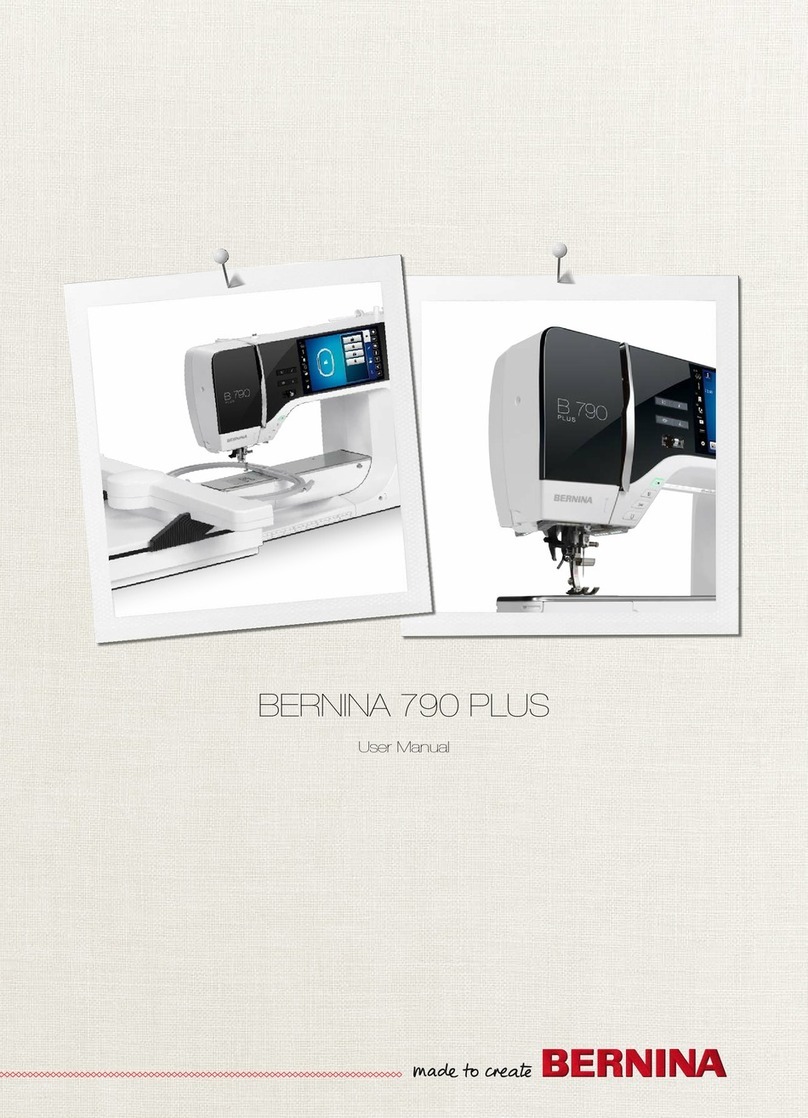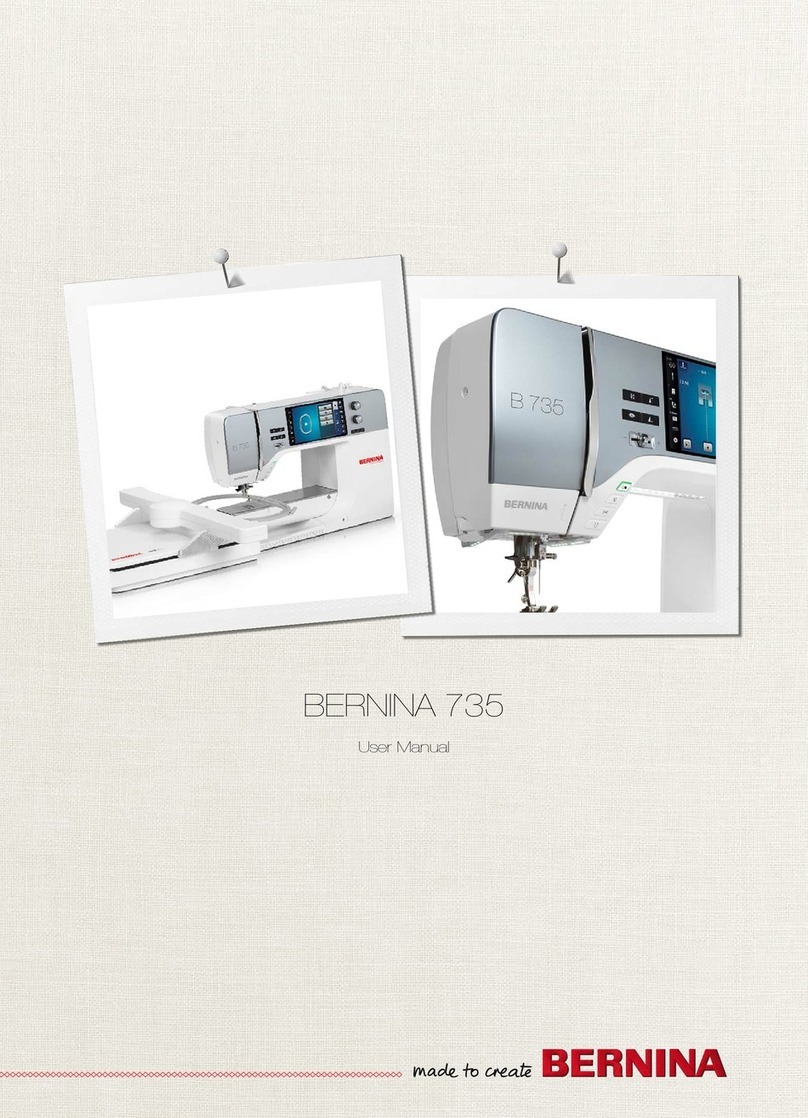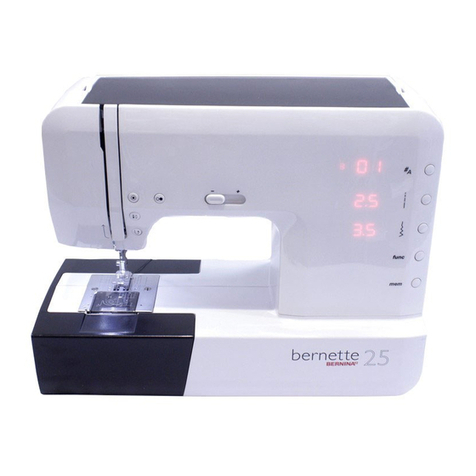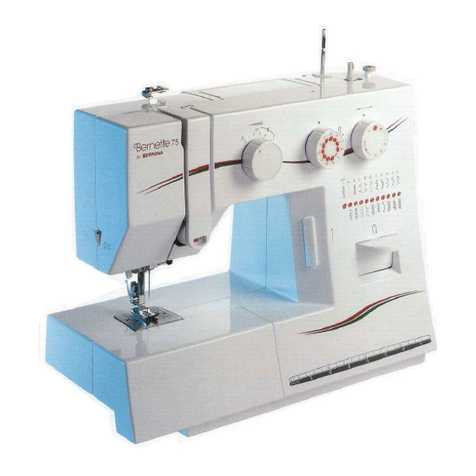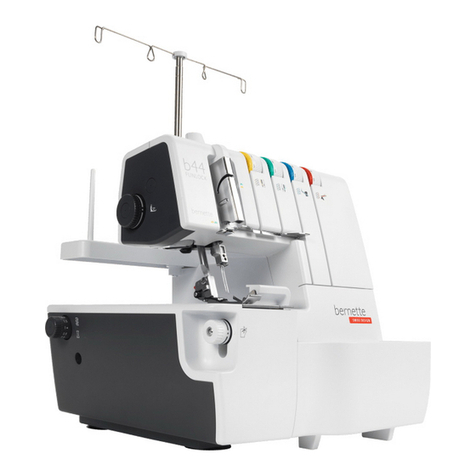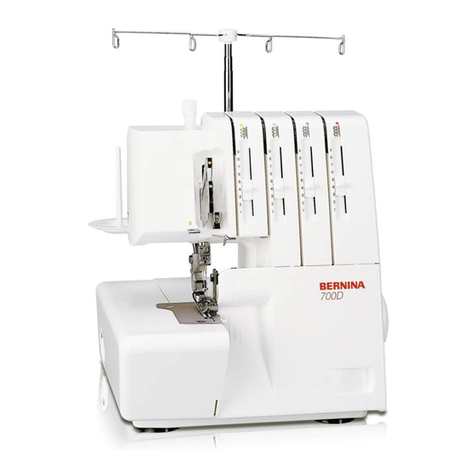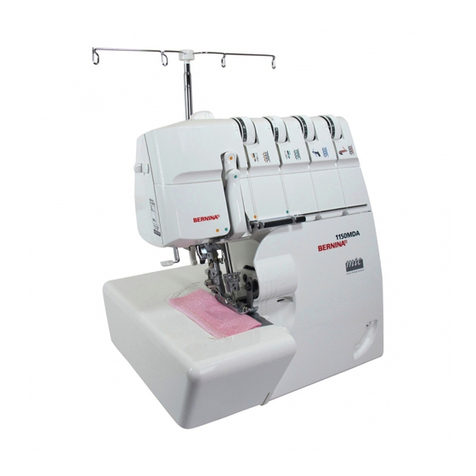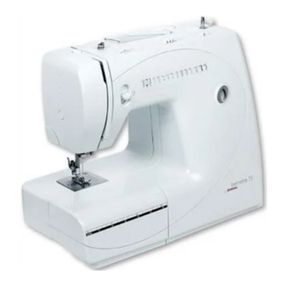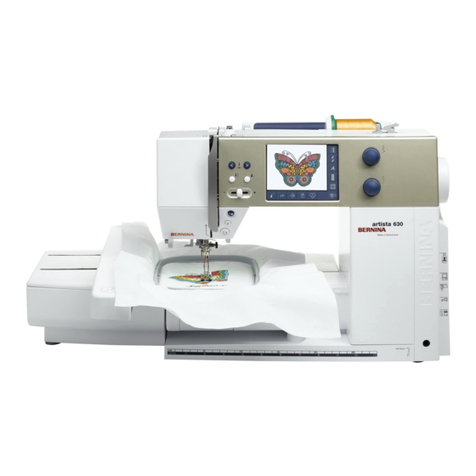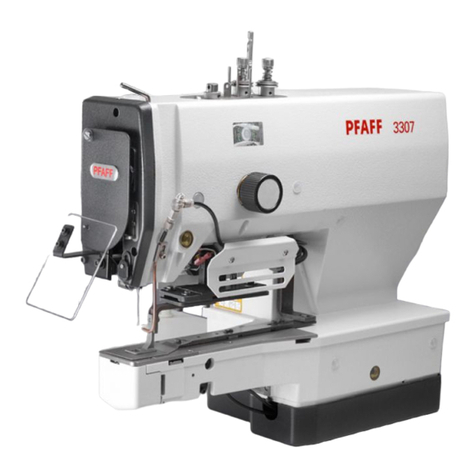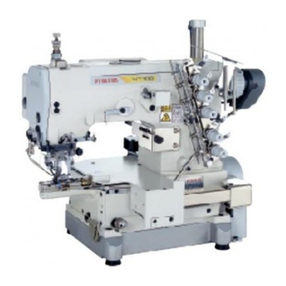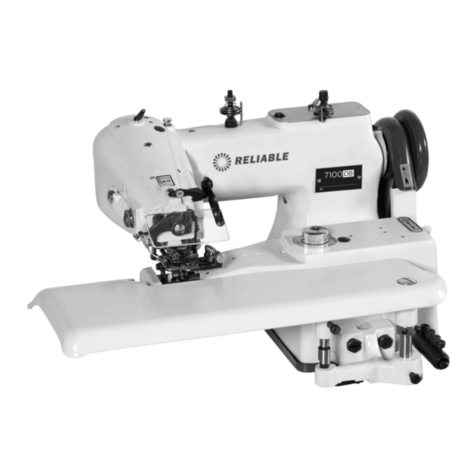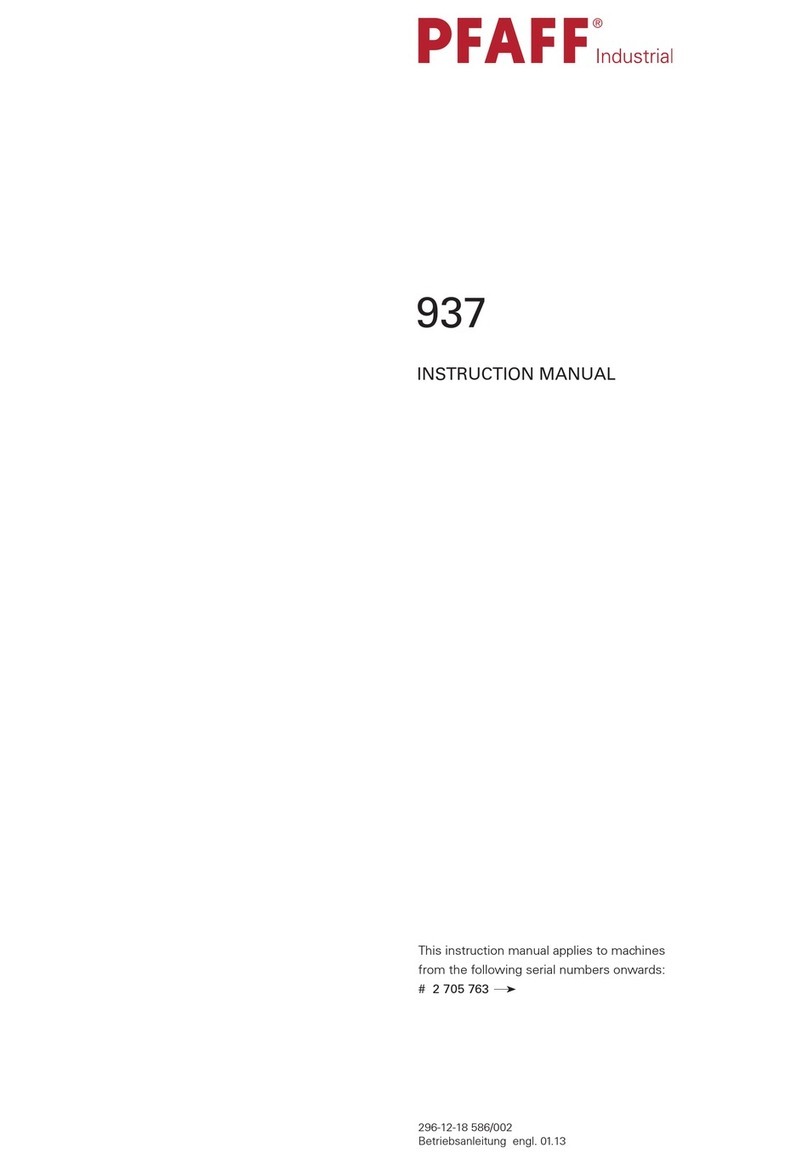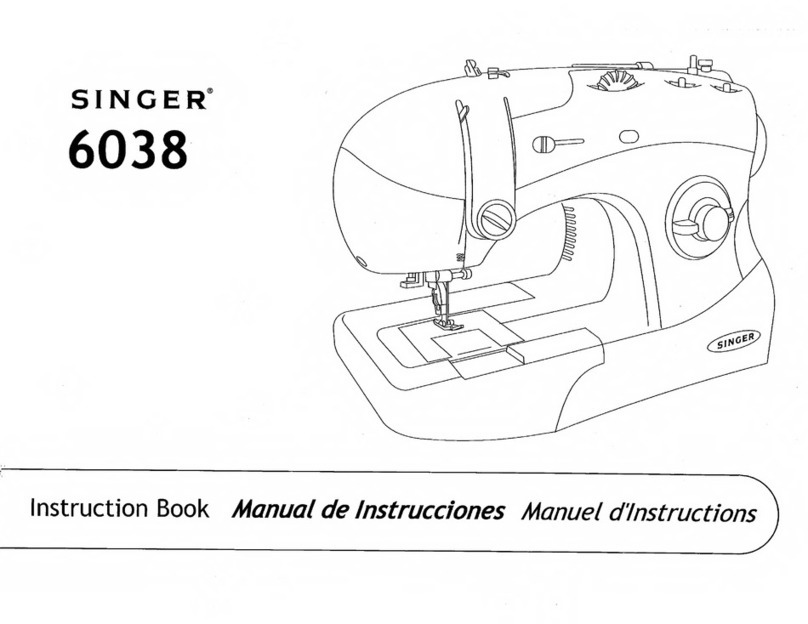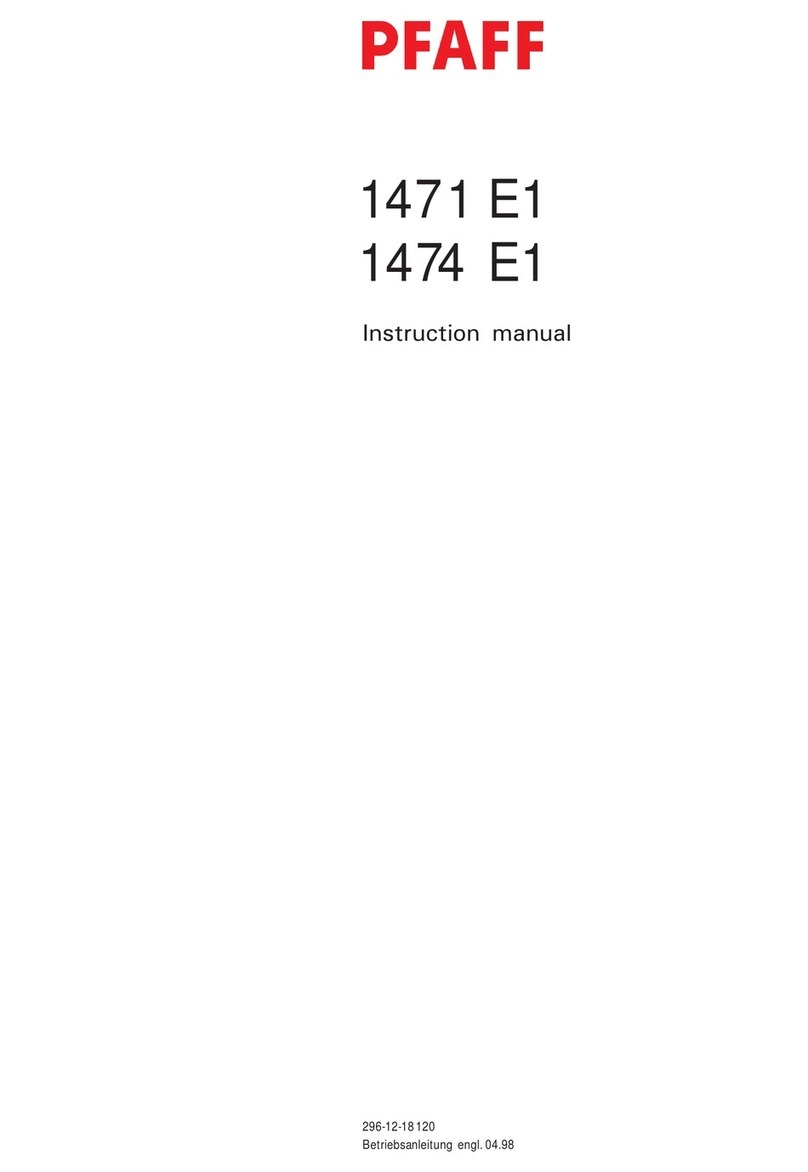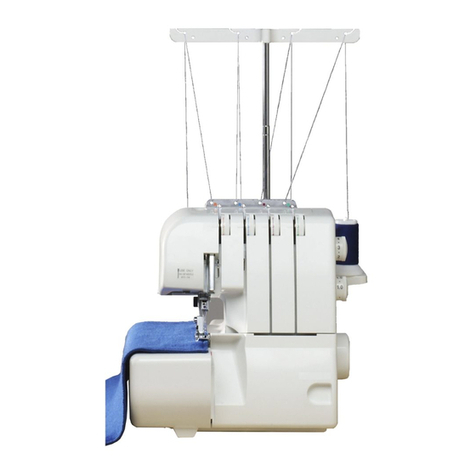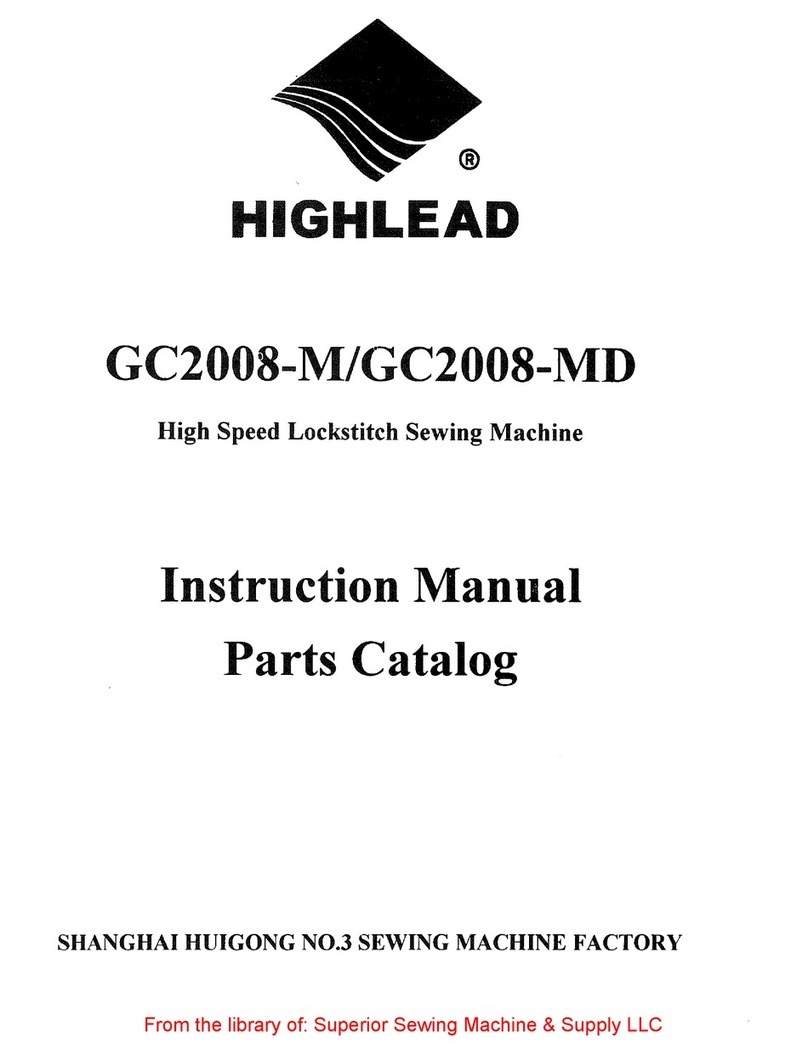6
The electronics of the BERNINA activa are basically
contained in two modules (printed circuits), namely on the
power L-print and the S-print (see block diagram).
Power supply L-print
The power L-print is mounted at the rear of the sewing
machine. The circuits produce the following direct current
voltages:
•5 V/DC for the logic on the S-print.
•12 V/DC for the sewing light.
•30 V/DC for the drive motor, bobbin winder motor and
stepping motors.
•16 V/DC for motor control on the S-print.
In case of malfunction, the fuse F-4A-T protects the parts
against overload. If a fuse blows, only an original replace-
ment with the correct ratings must be used.
S-print
The S-print is assembled with the latest SMD (Surface
Mounted Device) technology. SMD components allow a
very compact type of circuitry.
SMD prints cannot be repaired with conventional tools!
The micro-computer on the S-print receives an analogue
signal from the foot control which is converted into a digital
signal and given as a nominal value. When the foot control
is released (nominal value zero) the micro-computer
switches on the electric brake. The motor is stopped very
quickly in the required needle position.
When the sewing machine is switched on the stepping
motors are in any given position. There can also be any
given value in the memory of the micro-computer. So that
a defined basis is achieved, the stepping motors are
positioned by means of a signal from the micro-computer.
This position is then registered and set at zero in the
memory of the micro-computer. It is then possible to select
and sew any given stitch from this zero position.
The S-Print controls the functions of the stepping motors
to one another, calculates the signals of the sensors, com-
piles the results and displays them on the screen.
Integrated on the S-Print are the display, P-Print and
return button.
Description of the electronics

